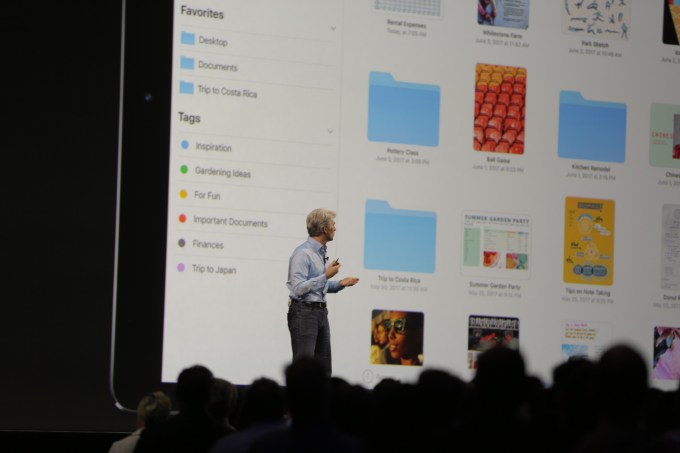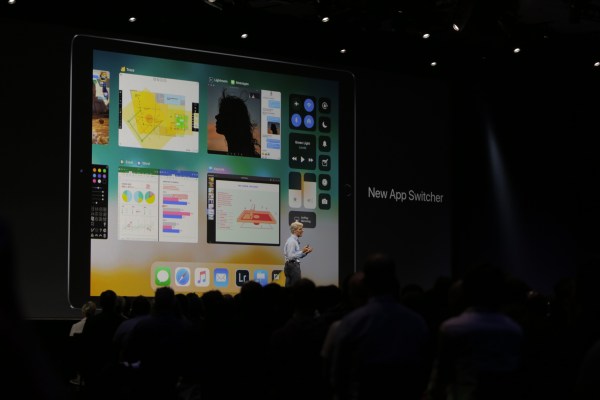In the second half of their WWDC 2017 keynote, Apple circled back to iOS 11 to introduce some iPad-specific features that focus on productivity — and further blur the difference between iOS and macOS.
All of these features will make it easier for people to use the iPad for the type of tasks that typically make you want to pull out your laptop because the task is just too hard to do on a mobile-focused operating system.
The first change is that the dock can now be filled with a bunch of apps — making it look and function like the dock on your iMac. The dock can also now appear on any screen — meaning you don’t have to go home to access the dock.

There’s also a new app switcher, which essentially brings “windows” to iPad. When activated, you can see (and switch between) each window you are working on, and each window maintains split-view apps if you are using them.
Apple also introduced drag-and-drop functionality throughout iOS 11. For example, you can drag a URL or Photo from Safari into a mail message that’s occupying the other half of the screen.
[gallery ids="1499839,1499841"]
The company is also launching a new app called Files, which brings desktop-style file management to iPad. The app brings together all your files and supports nested folders, tags, search, etc. Files also supports iCloud and third-party storage providers like Dropbox and Google Drive.

Launching Files is a way to appease power users while not making iPad too complicated for the average user, as building a full file system into iOS would have been too confusing for users who crave the simplicity iPad provides. Of course, it is also a not-so-subtle acknowledgment that as great as the simplicity of mobile is, sometimes we just need desktop-level features like a file system and windows.
iOS 11 will be available to developers today, and everyone else as a free upgrade in the fall.
